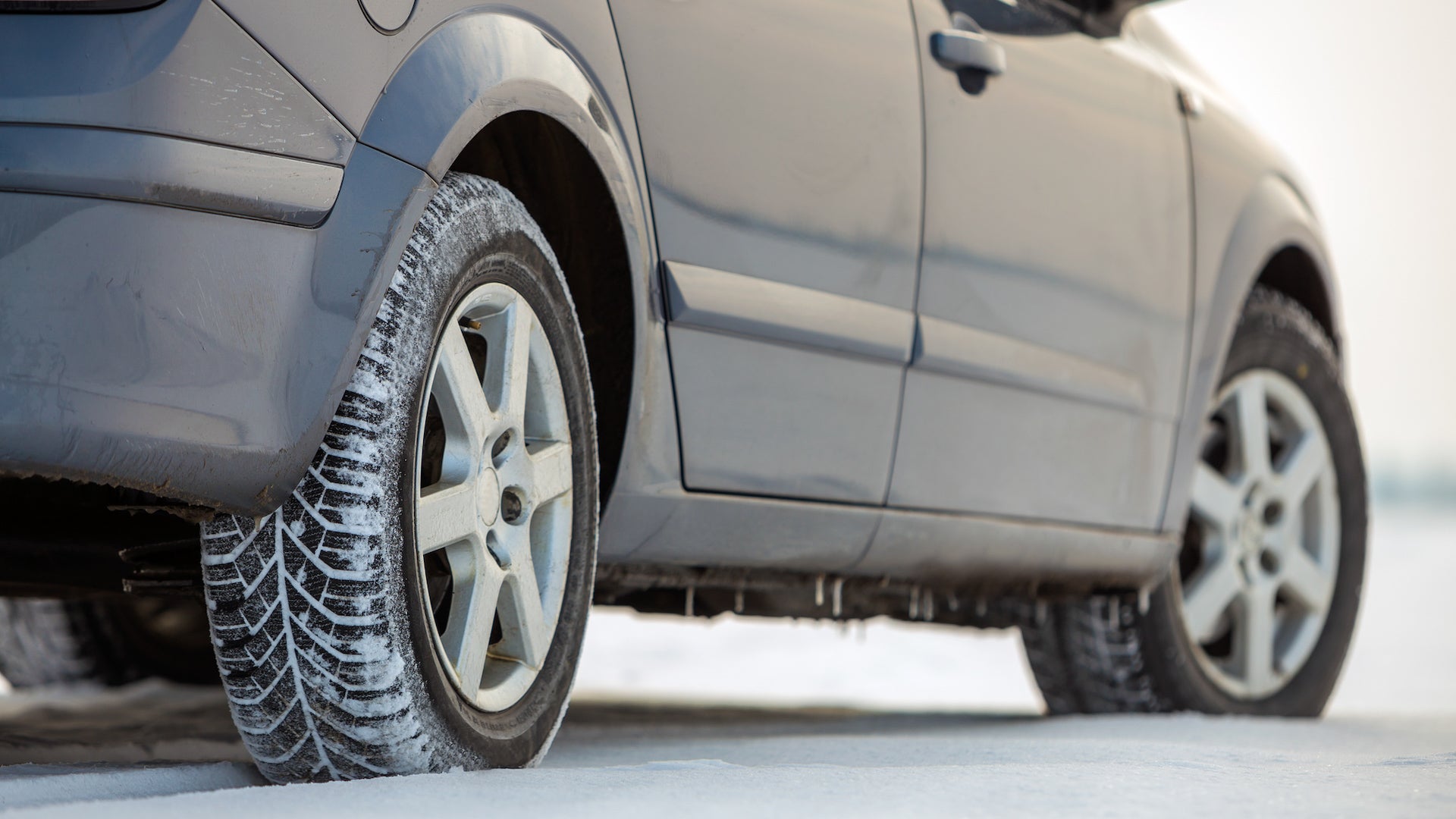The Drive and its partners may earn a commission if you purchase a product through one of our links. Read more.
No matter what you may have learned from the antics on Top Gear, tires are the only part of your vehicle that are actually intended to touch the road. That makes them important to understand, especially in relation to the difference between all-season and winter tires.
There’s a great chance that your vehicle came from the factory with all-season tires, which are suitable for a wide range of conditions, temperatures, and driving styles. All of that is good news for most of us, but there are times that all-season tires fall short, especially in cold temperatures.
That’s where winter tires come in. They’re designed to handle cold weather, light snow, and even ice in some cases, and are a much better choice for people that live in the snow belt (cries in Maine). You might still be wondering what makes snow tires different from all-season tires, so The Drive’s elite squad of researchers and journalists have put together information to help you make the best tire buying decisions.
All-season tires have been around since the late 1970s when Goodyear introduced a tire designed for year-round use. They’re capable of handling wet or dry roads, and can even perform safely in light snow. All-season tires are designed to operate in a wide temperature band, but not at the extremes in either direction.
Winter tires are made from special rubber compounds that are designed to stay pliable and provide grip even when the thermometer dips below 45 degrees Fahrenheit. They typically feature deep tread patterns and several small grooves called sipes, which “bite” and grip in snow. Even without snow, winter tires provide better traction in cold weather.
It’s possible to run winter tires all year, but it’s not a good idea. It might also be illegal, depending on the type of winter tire you have and where you live. The rubber compounds in winter tires are designed to perform best in colder temperatures, which means they can become very soft and wear down quickly when the mercury rises. It’s also important to remember that some areas have laws against running winter tires year-round, especially if they’re studded.
This really depends on the brand and spec of the tires you’re shopping for, but in most cases pricing for winter rubber is similar to that of all season tires.
We can thank the marketing wizards at major tire companies for the all-season moniker, but as you might imagine, marketing wizards are not necessarily engineering wizards. All-season tires are designed to work well in most weather conditions and in most areas. They’re not the best for extreme temperatures in either direction. That said, all-season tires will serve many people well, especially those that live in temperate climates.
YES! No matter how many wheels are being driven, your vehicle won’t be able to stop any faster in snowy conditions without the proper tires. Winter tires are designed with special tread patterns that “bite” into the snow and help slow the vehicle safely, and the same is true for acceleration. Winter tires are one of the best ways to ensure that a vehicle will accelerate and stop in slick conditions as safely as possible.
First, you’re right. There aren’t many winter tire options for today’s enormous wheel sizes, and the ones that are available can be prohibitively expensive. Second, if your wheels are aftermarket, there’s a chance that they cost an arm and a leg to replace or repair, so it’s probably best to avoid running them in winter regardless of the tire. In these cases, it might be a good idea to purchase a set of smaller dedicated winter wheels. As long as the winter wheel and tire diameter together are the same as those of your summer wheels and tires, you’ll have no problems with your speedometer readings or with vehicle safety.
Here at The Drive, we’ve come up with a handy-dandy tire health checklist that you can easily follow. Below is everything you’ll need to make sure your tires are safe to use.
A lot can go wrong with a tire, so it’s important to constantly check that it’s up to snuff. Look for and be aware of these factors when examining the health of your tires:
Listen, we know how hard it can be to pick the right tire. Between the word-jumble that are tire specifications, as well as the tire manufacturer's names for tires that never just say what they are, it can be a pain and you might end up with the wrong shoes for your ride. That's why we've partnered up with our friends at Tire Rack. They'll take the headache out of tire shopping. All you have to do is click here.
You’ve got questions, The Drive’s informational team has answers!
Bridgestone Blizzak WS80 Winter/Snow Passenger Tire
Michelin X-Ice Xi3 Winter Radial Tire
MICHELIN Premier LTX All-Season Tire
Pirelli CintuRato P7 All-Season Radial Tire
Got a question? Got a pro tip? Send us a note: [email protected]









